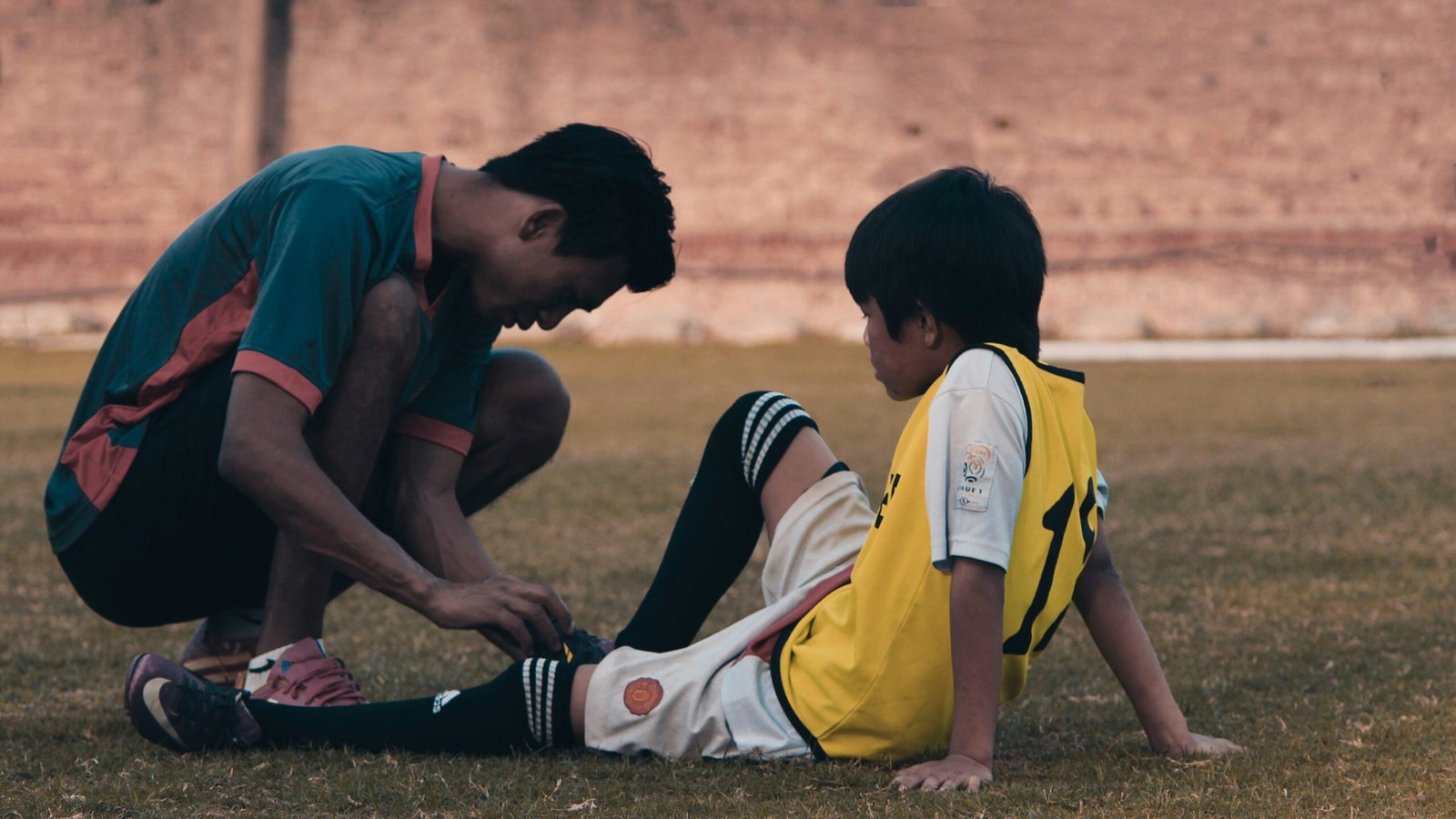Background on Charlie Ballard’s Career
Charlie Ballard has made a significant impact in the Australian Football League (AFL) since his debut, showcasing his skills and dedication on the field. Born on 3rd March 1998, Ballard began his football journey in the junior leagues, where his talent was evident early on. His exceptional performances in local competitions earned him a place in the high-performance pathways, leading to his selection in the 2016 AFL Draft by the Gold Coast Suns.
Ballard made his debut for the Gold Coast Suns in 2017, and quickly established himself as a formidable defender. Throughout his career, he has been noted for his reliability and tenacity, which are hallmarks of his playing style. Standing at 192 cm, his height and athleticism enable him to excel in aerial contests and provide a robust defensive presence. Over the years, Ballard’s skill set has expanded, including his ability to read the game, intercept marks, and launch counterattacks from the backline.
Statistically, Ballard has consistently contributed to his team’s overall performance. Notable achievements include being among the leading players for intercept possessions and effectively shutting down key forwards from opposing teams. His commitment and work ethic were recognized when he received several nominations for the AFL Rising Star award in his early years. Furthermore, Ballard’s leadership qualities have emerged, with him often taking on a mentor role for younger players within the Gold Coast Suns squad. His contributions have not only enhanced his team’s defensive strategies but have also made him a fan favorite.
As his career progressed, Charlie Ballard became an integral part of the Gold Coast Suns’ lineup, demonstrating the importance of his role in the league. His journey from junior leagues to the AFL exemplifies the potential that young athletes possess, and his resilience and skill will undoubtedly leave a lasting mark in the football world.
Details of Ballard’s Injury
Charlie Ballard, the talented defender for the Gold Coast Suns, has unfortunately sustained a significant injury that has led to his being ruled out for the entire season. The injury in question is a ruptured anterior cruciate ligament (ACL), a common yet serious concern among athletes, particularly those involved in contact sports like Australian Football League (AFL). This type of injury typically occurs during sudden changes in direction, jumps, or direct collisions, which often raises questions regarding both the incident and the broader implications for the player’s career.
The injury was reported to have occurred during a routine training session, highlighting the unpredictable nature of such incidents. While specific details of the incident remain somewhat limited, it is known that Ballard felt immediate pain and instability in his knee, prompting medical assessment. Following a series of thorough examinations, including MRI scans, the medical team confirmed the rupture, a diagnosis that undoubtedly brought significant concern to both Ballard and the Suns’ coaching staff.
Regarding the timeline for recovery, it is generally accepted that an ACL injury can lead to an extensive rehabilitation process, often requiring at least six months to a year before an athlete returns to competitive play. This timeframe can fluctuate based on the severity of the injury and the individual’s response to rehabilitation. In Ballard’s case, specialists have indicated that he will need a comprehensive approach involving surgery, followed by a structured physiotherapy regime to regain full functionality.
Expert insights into AFL injuries of this nature emphasize the critical importance of early diagnosis and intervention. Rehabilitation protocols are increasingly designed to address not only physical rehabilitation but also the psychological aspects, which can be just as impactful for an athlete’s return to the field. In this context, understanding the implications of Charlie Ballard’s injury extends beyond immediate impacts, raising concerns over his long-term performance and potential career trajectory within the AFL.
Impact on the Team and Season
Charlie Ballard’s absence is set to reverberate throughout his team, potentially altering its dynamics significantly. As a crucial player, Ballard has contributed not only to the team’s defensive strategies but also influenced its overall morale. His departure due to injury raises immediate concerns regarding both the tactical adjustments required and the psychological impact on his teammates.
In terms of game strategy, the coaching staff may need to reassess individual roles and team formations, possibly shifting positions to mitigate the lack of Ballard’s presence in critical match situations. The team might opt to integrate less experienced players from the reserve squad, presenting both an opportunity for fresh talent and a challenge regarding consistency and cohesion during gameplay. A strategic reconfiguration will be essential to ensure competitive performance for the remainder of the season.
Moreover, the dynamics within the locker room may shift as team members grapple with Ballard’s absence. In previous instances where key players were sidelined due to injury, teams have experienced varying results. For example, when high-profile players like Nathan Fyfe or Max Gawn faced extended breaks, their teams underwent significant readjustments. Those adjustments, at times, led to the emergence of new leaders, fostering resilience and, in some cases, even leading to unexpected success. Conversely, some teams have struggled, unable to levy the same level of performance without their mainstays.
The impact on team morale can be profound, as players often look to each other for support during challenging times. Ballard’s leadership and experience will be missed, yet this situation could also unite the team in a common goal, motivating them to rally around their absent teammate. The anticipation for how the team will respond as the season progresses will remain a key focus for analysts and fans alike, who will be keenly observing any new developments arising from this challenging period.
Looking Ahead: Ballard’s Future and Recovery
Charlie Ballard’s recent season-ending injury has raised many questions regarding his future in the Australian Football League (AFL). The immediate concern lies in the expected recovery timeline, which typically varies based on the severity of the injury. Medical reports suggest that he may require several months of rehabilitation, including physical therapy and possibly surgery, which will be necessary for a full recovery. During this period, dedicated focus on his rehabilitation will be essential in ensuring Ballard returns to peak physical condition.
The rehabilitation process is crucial for any athlete recovering from an injury of this nature. It often includes strength training, flexibility exercises, and gradual reintroduction to weight-bearing activities. Medical staff will oversee his progress closely, utilizing both traditional and advanced recovery techniques, including physiotherapy and possibly hydrotherapy. Importantly, this process will not just aim for physical recovery but will also ensure that Ballard’s mental resilience remains strong, which is equally vital in high-level competitive sports.
Following recovery, team coaches and management will need to consider how best to reintegrate Ballard into the squad. This could involve limited playtime in early matches, monitoring his performance closely to ensure he can resume his prior levels of contribution without undue strain. Coaches are expected to develop individualized plans to facilitate not just his physical return to play, but also the psychological acclimatization that comes after serious injury. Insights from sports analysts suggest that if managed effectively, Ballard could not only regain his spot on the team but may emerge stronger and more determined than before. Such outcomes have been observed in other players who have triumphed over similar adversities.
Given Ballard’s dedication, the support of his coaching staff, and the advancements in rehabilitation techniques, there is a strong belief in his potential for a successful comeback. This situation provides an opportunity for growth, and the future may very well hold significant achievements for him in the AFL.

